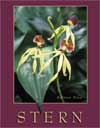1. Flowering plants (angiosperms) have ovules and seeds completely enclosed
within carpels; the carpels comprise ovaries that become fruits. There is one
phylum of flowering plants (Magnoliophyta); it is divided into two classes (dicots
and monocots). 2. Englerian botanists believed flowering plants evolved from conifers.
Most contemporary botanists hypothesize they evolved separately from pteridosperms
and that the first flowers had many separate, flattened parts spirally arranged
on an elongate receptacle. 3. Flowering plants are heterosporous. 4. Flowering plant gametophytes develop in separate structures. The
female gametophyte (megagametophyte) develops in the ovule. Integuments, which
later become a seed coat, surround the megagametophyte. Pollen grains developed
in anthers become male gametophytes. 5. Pollination is the transfer of pollen grains from an anther to a
stigma; it is brought about by insects, wind, and other agents. 6. After pollination, a pollen tube may grow from a pollen grain to
the female gametophyte; the tube nucleus remains at its tip, and the generative
nucleus divides, producing two sperm nuclei. 7. Following the discharge of the contents of the pollen tube into the
female gametophyte, a sperm nucleus unites with the egg, forming a zygote; the
other sperm nucleus simultaneously unites with the two central cell nuclei,
forming a 3n endosperm nucleus. 8. The endosperm nucleus becomes nutritive endosperm tissue that may
become part of the seed or be absorbed by the seed's embryo. 9. Due to variations in how a female gametophyte develops, some flowering
plants produce 5n, 9n, or 15n endosperm tissue. 10. Some artificial grouping of flowers to aid identification does not
reflect natural relationships. Sources of evidence used to try to group plants
naturally include fossils, which suggest the flowering plants first appeared
about 160 million years ago. 11. Primitive flowering plants had simple leaves and numerous spirally
arranged flower parts that were not fused to each other; they possessed both
stamens and pistils and were radially symmetrical (regular). 12. Specializations include a reduction in the number of parts, fusion
of parts, appearance of compound pistils composed of several individual carpels,
inferior ovaries, bilateral symmetry (irregular flowers), and unisexual flowers. 13. Monoecious species have both male and female flowers on the same
plants; dioecious species have male and female flowers on separate plants. 14. Bee-pollinated flowers are delicately sweet and fragrant and tend
to be blue or yellow in color. 15. Beetle-pollinated flowers tend to have stronger odors and are usually
white or dull in color. 16. Some fly-pollinated flowers emit foul odors. 17. Moth-pollinated flowers tend to be white or yellow. 18. Bird-pollinated flowers are usually bright red or yellow and have
much nectar but little odor. 19. Most orchids produce pollen grains in pollinia that adhere or clamp
onto parts of visiting insects. The flowers of some orchid species have developed
bizarre pollination mechanisms. 20. Herbaria are essentially libraries of dried, pressed or otherwise
preserved plants, fungi, and algae arranged so that specific specimens may be
readily located. Properly preserved plants may last for hundreds of years. 21. A plant to be pressed is placed in a plant press between sheets
of newspaper and absorbent material. Dry specimens are affixed to sheets of
high-quality paper, with a label giving collection information. 22. Plant parts may be pressed for artwork, place mats, and so on. Flowers
may be preserved three-dimensionally. 23. Because so many plants are now on rare and endangered species lists,
collectors should try to confine their future collecting to photographs as much
as possible. | 


 2003 McGraw-Hill Higher Education
2003 McGraw-Hill Higher Education